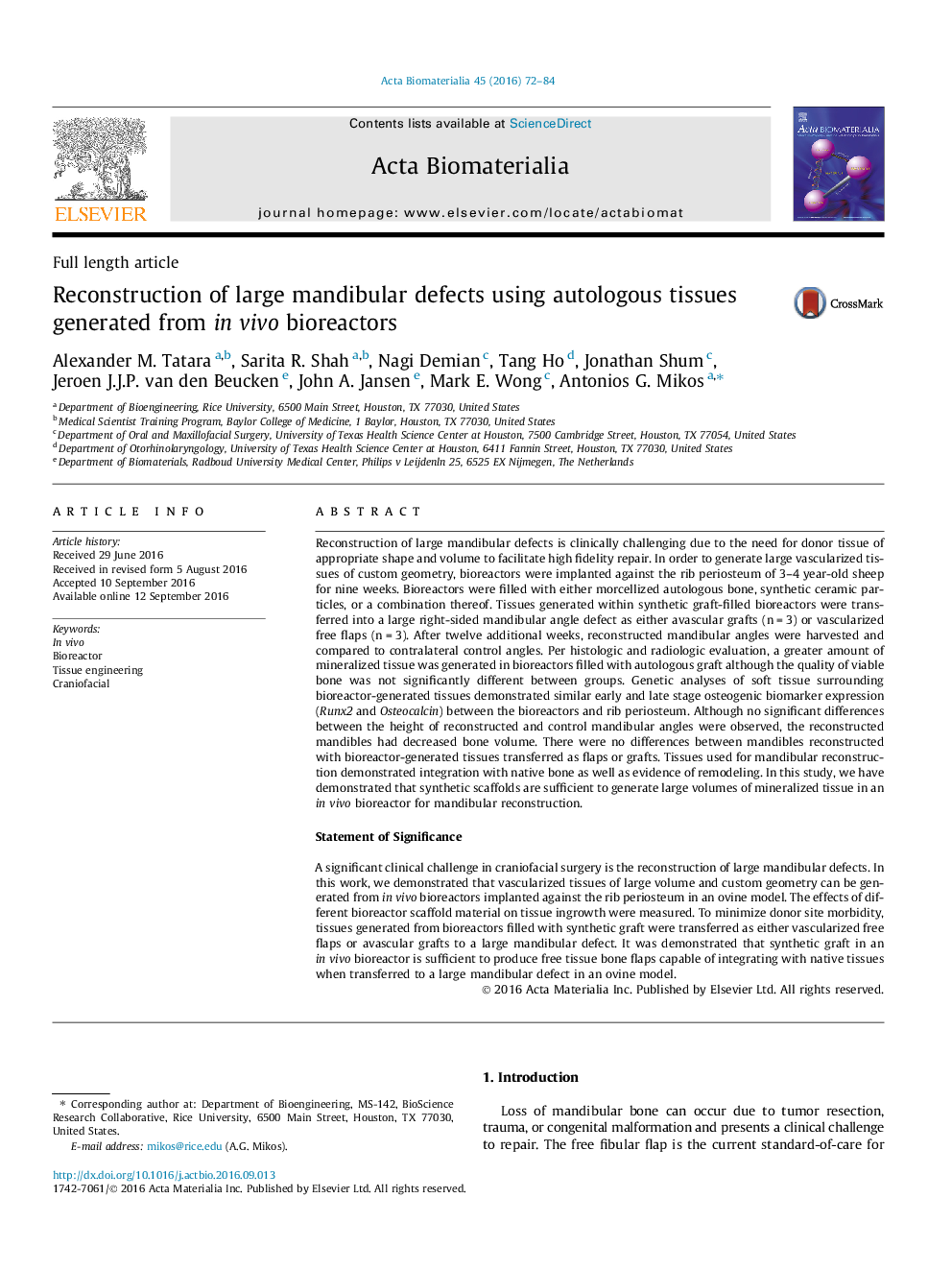| کد مقاله | کد نشریه | سال انتشار | مقاله انگلیسی | نسخه تمام متن |
|---|---|---|---|---|
| 6450283 | 1415941 | 2016 | 13 صفحه PDF | دانلود رایگان |

Reconstruction of large mandibular defects is clinically challenging due to the need for donor tissue of appropriate shape and volume to facilitate high fidelity repair. In order to generate large vascularized tissues of custom geometry, bioreactors were implanted against the rib periosteum of 3–4 year-old sheep for nine weeks. Bioreactors were filled with either morcellized autologous bone, synthetic ceramic particles, or a combination thereof. Tissues generated within synthetic graft-filled bioreactors were transferred into a large right-sided mandibular angle defect as either avascular grafts (n = 3) or vascularized free flaps (n = 3). After twelve additional weeks, reconstructed mandibular angles were harvested and compared to contralateral control angles. Per histologic and radiologic evaluation, a greater amount of mineralized tissue was generated in bioreactors filled with autologous graft although the quality of viable bone was not significantly different between groups. Genetic analyses of soft tissue surrounding bioreactor-generated tissues demonstrated similar early and late stage osteogenic biomarker expression (Runx2 and Osteocalcin) between the bioreactors and rib periosteum. Although no significant differences between the height of reconstructed and control mandibular angles were observed, the reconstructed mandibles had decreased bone volume. There were no differences between mandibles reconstructed with bioreactor-generated tissues transferred as flaps or grafts. Tissues used for mandibular reconstruction demonstrated integration with native bone as well as evidence of remodeling. In this study, we have demonstrated that synthetic scaffolds are sufficient to generate large volumes of mineralized tissue in an in vivo bioreactor for mandibular reconstruction.Statement of SignificanceA significant clinical challenge in craniofacial surgery is the reconstruction of large mandibular defects. In this work, we demonstrated that vascularized tissues of large volume and custom geometry can be generated from in vivo bioreactors implanted against the rib periosteum in an ovine model. The effects of different bioreactor scaffold material on tissue ingrowth were measured. To minimize donor site morbidity, tissues generated from bioreactors filled with synthetic graft were transferred as either vascularized free flaps or avascular grafts to a large mandibular defect. It was demonstrated that synthetic graft in an in vivo bioreactor is sufficient to produce free tissue bone flaps capable of integrating with native tissues when transferred to a large mandibular defect in an ovine model.
Figure optionsDownload high-quality image (133 K)Download as PowerPoint slide
Journal: Acta Biomaterialia - Volume 45, November 2016, Pages 72–84